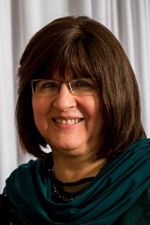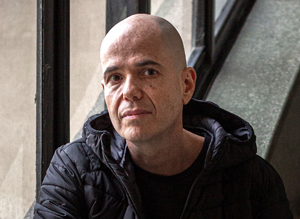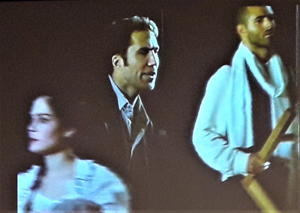
JERUSALEM — As heads of almost 50 nations gathered in Jerusalem for the 5th International Holocaust Forum, leading up to International Holocaust Remembrance Day on January 27, we were reminded that since the time of Sodom and Gomorrah, there have been stories of neighbors who did not exemplify those in Mr. Roger’s neighborhood.
But the film 1945 and the play The Class give new meaning to the phrase “bad neighbor.” These very relevant works of performance art were among those highlighted at the 5th Kisufim (Hebrew for “longings”) conference held at the Van Leer Institute in Jerusalem, in November. This year’s topic was: “Writing, Memory and Vision” and it was produced in partnership with the Zalman Shazar Center, the Hebrew Writers Association, and the Matanel Foundation, among others.
What if the Jews would return?
1945 (Director Ferenc Torok, Hungary, 2017), a haunting film in black and white, is about a white-bearded Jew and his son who arrive by train, after the war, and who hire a Gentile wagon driver and someone who appears to be his son, to travel to a local village with a box they have removed from the train. It looks like a coffin, but the old Jew tells the driver it contains various amenities, like shampoo, soap and perfume, presumably for sale.
They walk behind the wagon all the way to the village. It is a long walk through the Hungarian countryside, but they refuse the wagoner’s offer to ride in the back with the box. Nobody in the village seems to know them, but some are fearful that another Jew, called “Polak,” will return. He had been the owner of the pharmacy, that had been turned over to the son of the town clerk, after all the Jews were deported.
The Hungarian villagers react in a variety of ways, ranging from panic, to self-justification for having taken the possessions or the homes of the Jews, to guilt, to fear, to mutual incrimination, or any combination of the above. No one appears to remain indifferent. And the two Jews walking behind the wagon plod silently and stoically forward, not reacting to the villagers who cross their path or who watch them from the sidelines. They eventually arrive at a Jewish cemetery. You’ll have to see the film to see what they bury there (which is not exactly the same as in the story).
The film is replete with passing hints and visual symbolism, and subplots that include, on the part of the villagers, lovers’ heartbreak, immoral behavior, confession to a priest, fleeing the scene and despair.
After the burial, to which the villagers have arrived, with pitchforks, the town clerk (relieved that the Jews did not return to claim property or possessions), puts out his hand to shake the hand of the elderly Jew, who hesitates, before giving it a perfunctory, brief shake. This is in contrast to the casual but sincere handshake he gives to the wagon driver (who, with his assistant/son has dug the grave), followed by a wave, as they part, which exudes warmth and gratitude.
There are open questions, like when the son of the wagoner asks why the Jews are tossing dirt over their shoulders following the burial and he says he’ll explain it later, that it’s a custom, a sign that he was not unfamiliar with Jews and their behaviors, leaving us wondering what his relationship was with them before and during the war. Unlike the villagers, he exhibits no signs of anxiety or guilt.
The old Jew and his son walk back to the station and board the train to go…where? As the train pulls away, the final frame is black smoke emoting from the train’s chimney, a reminder of the destiny of those who did not return.

(Photo: Laszlo Vegh)
Gabor T. Szanto, the author of the original story, Homecoming 1945, on which the film is based, participated, with the director, in writing the script, which is in Hungarian with English subtitles. There are differences between the film and the original story, which can be read in English here (Moment Magazine). The elderly Jew in the film, he said, was played by a non-Orthodox Jew who is actually a dancer. Szanto, who has also been the editor since 1991 of the Hungarian Jewish monthly Szombat, spoke at the Jerusalem conference after the screening of the film.
Szanto was born in Budapest in 1966, and said that his writer’s imagination comes from being the child of Holocaust survivors; his grandparents died in the Shoah. “I was traumatized by growing up in a Holocaust family, so I want to talk about things others didn’t talk about.”
He said that he has received reactions from all over Europe, from Holocaust survivors who say, “This is my story too,” as they returned to their home towns to find others living there.
He also said, “Of course I feel empathy to other suffering groups but I don’t like when the human sufferings of the Holocaust are used in contemporary political parallels.”
Szanto says, “Besides my work as novelist, and as editor of Szombat Jewish magazine, I had the chance to focus on the compensation issue. There are skeletons all over Europe… in Switzerland they published the Holocaust related documents of the Swiss banks in 27 volumes in the second half of the ’90’s because of US and international pressures. Why did it take 50 years for these stories to be covered?”
He first published the story in 2003, and he sent it to the director – who lived on the same street as he did – who found it interesting. “The general public knew about the Holocaust and the Communist dictatorship but not in between. I knew about the relevance of those years; that is why I wrote about, and that is why the film exploded the public discourse.” This period was a black hole; the film took almost ten years to produce, as they needed financing and there were other obstacles. The premiere was in 2016 in Miami.
“This film was an ice breaker on post-Holocaust issues: how the European societies, especially, but not exclusively, the Central-East-European societies, reacted to the phenomenon of the survivors’ homecoming … The response to the film was 90% positive, and 10% thought it was too critical or not critical enough.”
It won 20 international awards, including a Yad Vashem award two years ago, and has been distributed in 40 countries. “This issue [of the return of Jews to their towns] was rarely discussed, but it became a topic after the release of the film. The whole year 1945 became a topic in public life and really made a difference. There were 50,000 views in Hungary and all over the world.” It was a great success in the U.S., became a topic for teachers in France, was featured in the Spanish media, in South America, and has been translated into seven languages.
Szanto also wrote two novels on the communist dictatorship: Eastern Station, Last Stop is on the fate of three Jewish families in 1949, in the first year of communist dictatorship in Hungary, and Europa Symphony is a novel about a Transylvanian and a West Berlin family in the 60’s with interconnected secrets rooted back to 1945 to WWII Russian prisoners camp, and an escape-story from Ceausescu Romania.
I saw this film with my husband, whose parents spent the latter part of the Shoah hiding underground in Slovakia. I asked him if they returned to their former homes to see what remained; my mother-in-law had once told me she hid her candlesticks. Neither my husband nor his siblings had heard anything from their parents about returning to reclaim property or possessions. They went forward, came to Israel in 1949, just missing the Communist takeover of Czechoslovakia, and began a new life.
“Our Class” – A neighborly massacre

Another session at the Kisufim conference focused on the play Our Class based on the horrific massacre at Jedwabne, Poland, where on July, 10, 1941, Gentiles in the town murdered their neighbors, the Jews. Children who had grown up together, were schoolmates, kicked soccer balls around and traded love stories, morphed into murderers and victims.
There are some different versions regarding how many exactly were killed, and what role the local Nazis played in the massacre, but there were at least 300 Jews, possibly many more – including women, children and infants — who were locked inside a barn that was set on fire by their neighbors.
This was preceded or followed by rape, torture and plundering. A review of Anna Bikont’s book The Crime and the Silence notes that Bikont was “10 years old on July 10, 1941, when she saw her fellow Poles driving their Jewish neighbors into the barn. Schoolboys jeered at their Jewish classmates, hounding them toward death.” (From an interview in Tablet.)
Based on the Jedwabne pogrom, Our Class was written by Tadeusz Slobodzianek, a non-Jewish award-winning Polish playwright, and it was judged by the European Theater Convention as one of the best European plays written in the beginning of this century. In 2010 it was awarded the Nike Literary Award for a drama. The play follows ten Polish students, from the same classroom in Jedwabne, Jewish and Christian, through the horrors of the war and after it.
Slobodzianek, Hanan Snir (the director of the Israeli production), Prof. Hannah Yablonka (historian and Holocaust researcher), and Alon Dahan of the Cameri Theater Company, discussed the play. Several horrifying film clips were shown of the play, and Dahan performed a few heart-wrenching scenes from the Israeli production, live, before a rapt audience.
Yablonka said that the Poles saw themselves as victims, not less than the Jews. She thought there would be some healing after the play in Poland was performed, but there wasn’t. “Anti-Semitism is a political problem. The government is seeking someone to blame for their failures. But they can’t fool the audiences.”
Director Snir said, “The play is about groups of people who are together from first grade and slowly, under the Nazi reign, everything lets loose, and they become killers. Each character in the play has his own story. It’s about racism – people in a group do things they would not do as individuals.”
Dahan said, “This is the story of all of us. Those who escaped. And those who died.” Dahan’s character reads a long list of names, all burned to death in the barn, and he asks their neighbors: “What does your priest say about this?” He said that when they rehearsed it in Israel, “some of actors choked, and some cried.”
Yablonka was asked by a conference participant, “Could this happen today?” “Yes,” she said. “More than 250 million people were murdered in the 20th century.”
The play is also about the relationship of Jews and Poles throughout the generations. It begins with three weeks of German occupation of the Soviet area. The Poles identified Jews with Bolsheviks and Communists. In June, 1941, the Germans captured the city. But Yablonka also pointed out that more than 6,000 Poles are recognized by Yad Vashem as Righteous among the Nations.
Snir: “At the first performance in Israel, after the intermission, which was after the burning of the barn, some in the audience started to shout, ‘I was there.’”
The Shoah continues to live with us. Yablonka said, “It was unbearable for me to see Demjanjuk leaving Israel, traveling business class and smiling [in 1993]. I will never forget it. [It was a problem because] it raised doubts about the memories of the survivors [who had testified that he was Ivan the Terrible of Treblinka].”
Director Snir, gesturing to the playwright, Slobodzianek, said, “[Writing this play] demanded courage on the part of this playwright. We must be constantly aware of this and mention it.” Slobodzianek said he writes about Jews because, “I was from Bialystock, which was started as a Jewish shtetl, and there were 60% Jews living there before the Holocaust.” He is now working on a play based on the works of Isaac Bashevis Singer.
After the session, Snir told me that he was invited to direct Shakespeare’s The Merchant of Venice by a West German who had been brought over to run a theater in East Germany. He had always refused to direct it in Israel, as it is considered anti-Semitic, but he decided to do it if they would agree that it be done in Buchenwald. The theater head agreed. Snir costumed everyone but the Jew (Shylock) in Nazi uniforms, and had two huge Nazi flags hanging down from the ceiling to the floor, so when the audience walked into the hall, it was like walking into a Nazi “cantina” (officers’ club). Snir said, “They were in shock.”
When he rehearsed with the young Polish actors, Snir said they found it difficult, and that young Poles didn’t learn about the Shoah in Poland, as they hadn’t in East Germany.
He wanted to record the discussions that took place during rehearsals, but they refused. He said there is denial among the Poles, but there is an obligation “vesiparta l’banecha” – “and you shall tell your children,” so he decided to do it.
For he sees the obligation to pass on the truth to one’s children not only incumbent on the Jews, but on all the nations of the world.
*
Toby Klein Greenwald is an award-winning theater director, editor of WholeFamily.com and an award-winning journalist who covered many Holocaust stories, including the trial of John Demjanjuk for six years.